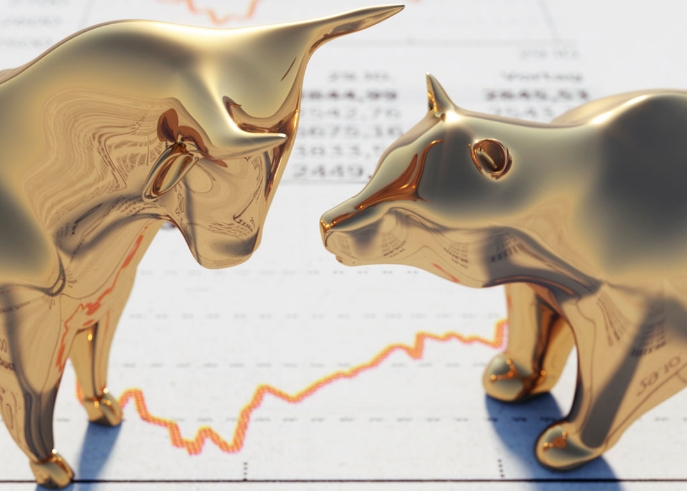Navigating Sector Rotation: Strategies for Capitalizing on Market Shifts
Monday, Nov 11, 2024 8:05 pm ET
Introduction
In the ever-evolving world of investing, understanding sector rotation can be a game-changer for investors. Sector rotation refers to the strategy of moving investments between different sectors of the economy to capitalize on various phases of the economic cycle. This concept is particularly relevant as it helps investors anticipate market movements and adjust their portfolios to maximize returns.
Core Concept Explanation
Sector rotation is based on the idea that different sectors of the economy perform better at different stages of the economic cycle. The economy typically moves through four phases: expansion, peak, contraction, and trough. During expansion, consumer discretionary and technology sectors often thrive as consumer spending and business investments increase. Conversely, during contraction, sectors like utilities and consumer staples tend to perform better as they offer essential goods and services that remain in demand regardless of economic conditions.
Application and Strategies
Investors can use sector rotation strategies to align their portfolios with the prevailing economic conditions. For example, during an economic expansion, investors might increase their exposure to technology and industrial sectors, which are likely to benefit from increased consumer and business spending. Conversely, in times of economic contraction, investors might shift their focus to more defensive sectors like healthcare and utilities, which tend to provide more stability.
One common strategy is to use sector exchange-traded funds (ETFs), which allow investors to gain exposure to specific sectors without having to pick individual stocks. By monitoring economic indicators and trends, investors can make informed decisions about when to rotate into or out of specific sectors.
Case Study Analysis
A notable example of sector rotation occurred during the recovery period following the 2008 financial crisis. As the economy began to recover, sectors such as financials and consumer discretionary experienced significant growth. Investors who anticipated this shift and rotated their portfolios accordingly were able to capitalize on the strong performance of these sectors.
In contrast, during the COVID-19 pandemic's initial stages in 2020, there was a noticeable shift towards technology and healthcare sectors, driven by increased reliance on digital solutions and healthcare demand. Investors who recognized these trends and adjusted their portfolios accordingly saw substantial gains.
Risks and Considerations
While sector rotation can offer opportunities, it is not without risks. Timing the market correctly is notoriously difficult, and misjudging the economic cycle can lead to suboptimal investment decisions. Additionally, external factors such as geopolitical events or unexpected economic shocks can disrupt sector performance.
To mitigate these risks, investors should conduct thorough research and maintain a diversified portfolio. Diversification helps spread risk across various sectors, reducing the impact of poor performance in any single sector. It's also crucial for investors to stay informed about economic indicators and market trends to make timely and informed decisions.
Conclusion
Sector rotation is a powerful strategy that allows investors to adapt their portfolios to changing economic conditions. By understanding the economic cycle and how different sectors perform at each stage, investors can make strategic decisions to enhance their investment returns. However, it is essential to approach sector rotation with caution, conducting thorough research and maintaining a diversified portfolio to manage risks effectively. By doing so, investors can navigate market shifts and potentially capitalize on opportunities in the ever-changing financial landscape.
In the ever-evolving world of investing, understanding sector rotation can be a game-changer for investors. Sector rotation refers to the strategy of moving investments between different sectors of the economy to capitalize on various phases of the economic cycle. This concept is particularly relevant as it helps investors anticipate market movements and adjust their portfolios to maximize returns.
Core Concept Explanation
Sector rotation is based on the idea that different sectors of the economy perform better at different stages of the economic cycle. The economy typically moves through four phases: expansion, peak, contraction, and trough. During expansion, consumer discretionary and technology sectors often thrive as consumer spending and business investments increase. Conversely, during contraction, sectors like utilities and consumer staples tend to perform better as they offer essential goods and services that remain in demand regardless of economic conditions.
Application and Strategies
Investors can use sector rotation strategies to align their portfolios with the prevailing economic conditions. For example, during an economic expansion, investors might increase their exposure to technology and industrial sectors, which are likely to benefit from increased consumer and business spending. Conversely, in times of economic contraction, investors might shift their focus to more defensive sectors like healthcare and utilities, which tend to provide more stability.
One common strategy is to use sector exchange-traded funds (ETFs), which allow investors to gain exposure to specific sectors without having to pick individual stocks. By monitoring economic indicators and trends, investors can make informed decisions about when to rotate into or out of specific sectors.
Case Study Analysis
A notable example of sector rotation occurred during the recovery period following the 2008 financial crisis. As the economy began to recover, sectors such as financials and consumer discretionary experienced significant growth. Investors who anticipated this shift and rotated their portfolios accordingly were able to capitalize on the strong performance of these sectors.
In contrast, during the COVID-19 pandemic's initial stages in 2020, there was a noticeable shift towards technology and healthcare sectors, driven by increased reliance on digital solutions and healthcare demand. Investors who recognized these trends and adjusted their portfolios accordingly saw substantial gains.
Risks and Considerations
While sector rotation can offer opportunities, it is not without risks. Timing the market correctly is notoriously difficult, and misjudging the economic cycle can lead to suboptimal investment decisions. Additionally, external factors such as geopolitical events or unexpected economic shocks can disrupt sector performance.
To mitigate these risks, investors should conduct thorough research and maintain a diversified portfolio. Diversification helps spread risk across various sectors, reducing the impact of poor performance in any single sector. It's also crucial for investors to stay informed about economic indicators and market trends to make timely and informed decisions.
Conclusion
Sector rotation is a powerful strategy that allows investors to adapt their portfolios to changing economic conditions. By understanding the economic cycle and how different sectors perform at each stage, investors can make strategic decisions to enhance their investment returns. However, it is essential to approach sector rotation with caution, conducting thorough research and maintaining a diversified portfolio to manage risks effectively. By doing so, investors can navigate market shifts and potentially capitalize on opportunities in the ever-changing financial landscape.










